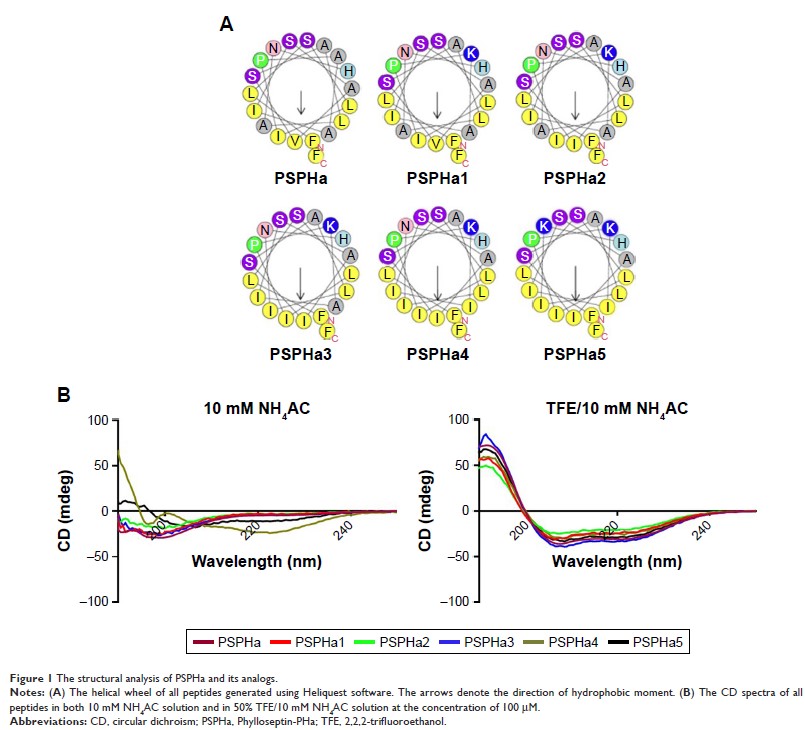9 0 8 0 2
论文已发表
注册即可获取德孚的最新动态
IF 收录期刊
- 2.6 Breast Cancer (Dove Med Press)
- 3.9 Clin Epidemiol
- 3.3 Cancer Manag Res
- 3.9 Infect Drug Resist
- 3.6 Clin Interv Aging
- 4.8 Drug Des Dev Ther
- 2.8 Int J Chronic Obstr
- 8.0 Int J Nanomed
- 2.3 Int J Women's Health
- 3.2 Neuropsych Dis Treat
- 4.0 OncoTargets Ther
- 2.2 Patient Prefer Adher
- 2.8 Ther Clin Risk Manag
- 2.7 J Pain Res
- 3.3 Diabet Metab Synd Ob
- 4.3 Psychol Res Behav Ma
- 3.4 Nat Sci Sleep
- 1.9 Pharmgenomics Pers Med
- 3.5 Risk Manag Healthc Policy
- 4.5 J Inflamm Res
- 2.3 Int J Gen Med
- 4.1 J Hepatocell Carcinoma
- 3.2 J Asthma Allergy
- 2.3 Clin Cosmet Investig Dermatol
- 3.3 J Multidiscip Healthc

抗菌肽 Phylloseptin-PHa 的构效关系:疏水性和电荷的平衡决定了生物活性和选择性
Authors Liu Y, Du Q, Ma C, Xi X, Wang L, Zhou M, Burrows JF, Chen T, Wang H
Received 16 October 2018
Accepted for publication 24 December 2018
Published 23 January 2019 Volume 2019:13 Pages 447—458
DOI https://doi.org/10.2147/DDDT.S191072
Checked for plagiarism Yes
Review by Single-blind
Peer reviewers approved by Dr Cristina Weinberg
Peer reviewer comments 3
Editor who approved publication: Dr Tuo Deng
Background: Antimicrobial
peptides (AMPs) from the skin secretions of amphibians are now considered as a
potential alternative to conventional antibiotics. Phylloseptins are a family
of AMPs identified in the skin secretions of Phyllomedusinae tree frogs which
exhibit highly conserved structural characteristics. This study examines the
structure–activity relationship of the newly discovered phylloseptin,
Phylloseptin-PHa (PSPHa) from Pithecopus hypochondrialis .
Materials and methods: PSPHa and
modified analogs were produced by solid phase synthesis and purified by
reverse-phase HPLC. Rationally designed modified analogs incorporating changes
in significant physicochemical parameters such as hydrophobicity, hydrophobic
moment and net charge were investigated to determine their influence on
secondary structure, antimicrobial activity, membrane permeabilization and
cytotoxicity.
Results: Overall,
we found that when rationally designing AMPs by altering their primary
structure it is important to keep a balance between hydrophobicity and
charge.
Conclusion: This
study provides new insights which will help in the future development of AMPs
as alternatives to conventional antibiotics for the treatment of Staphylococcus aureus and
methicillin-resistant S. aureus infections.
Keywords: phylloseptin,
antimicrobial activity, hydrophobicity, charge, membrane selectivity
